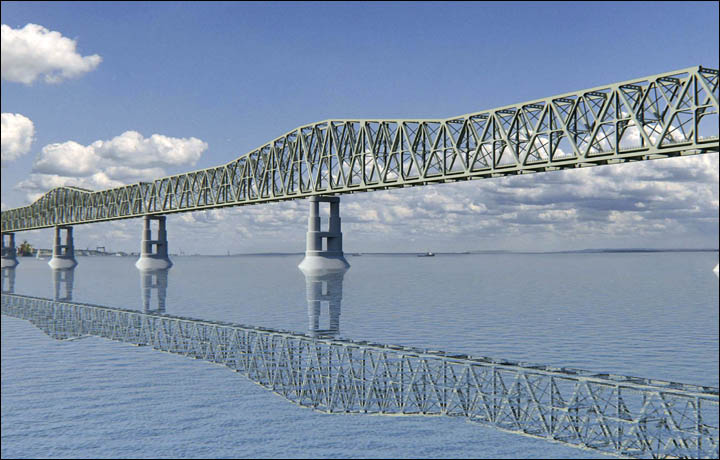
Posted on 09/09/2017 7:46:43 AM PDT by TigerLikesRooster
Scheme would allow epic journeys from London to the Japanese capital with major international crossing between Sakhalin and Hokkaido.
Project of the bridge between mainland and Sakhalin. Picture: Giprostroymost
The ambitious plan gave a welcome dose of optimism to a region engulfed by tension over the North Korean nuclear tests.
Such a road and rail bridge would tie together two countries - Russia and Japan - that have not signed a formal peace agreement ending the Second World War due to a dispute over the Kuril Islands.
Despite this, relations appear to be anyway warming with a number of joint projects in the Kurils unfolding between the countries.
'We are seriously offering Japanese partners to consider the construction of a mixed road and railway passage from Hokkaido to southern part of Sakhalin,' said Russia's first vice-premier Igor Shuvalov.
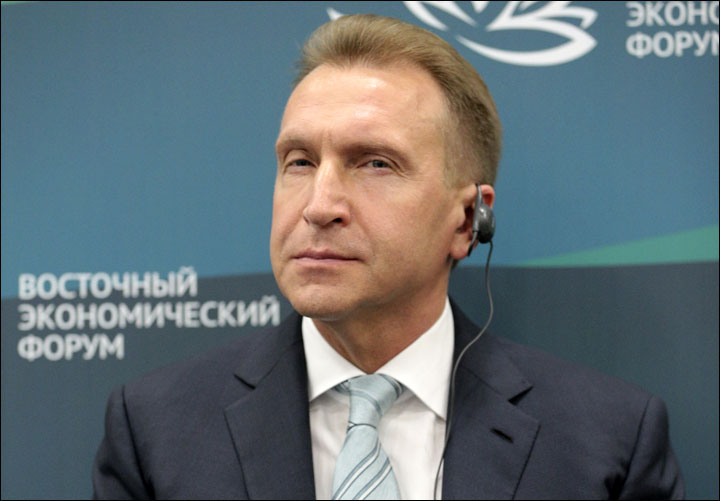
Russia's first vice-premier Igor Shuvalov on Eastern Economic Forum 2017. Picture: TASS
'At the same time, we are close to starting our part of the job, which is extending the railway to the Pacific shore and the construction of passage of the same complexity from mainland to Sakhalin.'
Currently the Trans-Siberian line ends in Vladivostok, but the new proposal, outlined Wednesday at the Eastern Economic Forum, held in the city, would see it go east from the Russian mainland to the Pacific island of Sakhalin, and from there to Hokkaido where it would link with the Japanese rail network.
Japan would become a 'continental state', he said.
'Given modern technologies, it is not even that expensive,' he said.
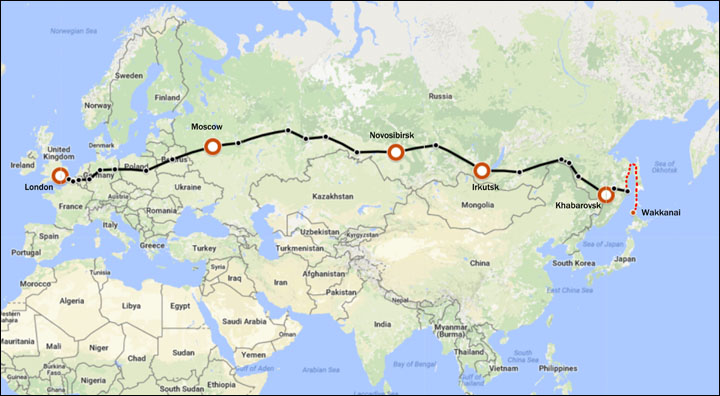
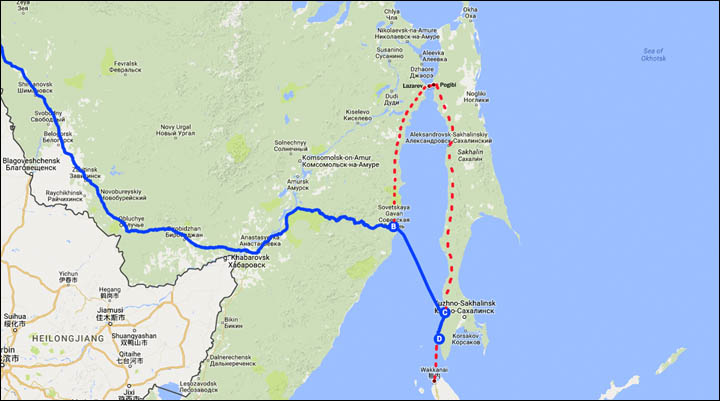
New proposal would see it go east from the Russian mainland to the Pacific island of Sakhalin, and from there to Hokkaido where it would link with the Japanese rail network. Pictures: The Siberian Times
Earlier senior figures in Moscow had played down the cost effectiveness of a rail link to Japan, but Shuvalov appears convinced.
The EEF was attended by more than 4,200 participants from Russia and many leading countries around the world.
Around those represented were Australia, Canada, China, India, Japan, the United Kingdom and the United States.
Vladimir Putin met South Korean President Moon Jae-in in Vladivostok and called for talks not more sanctions - as desired by the US - over North Korea.
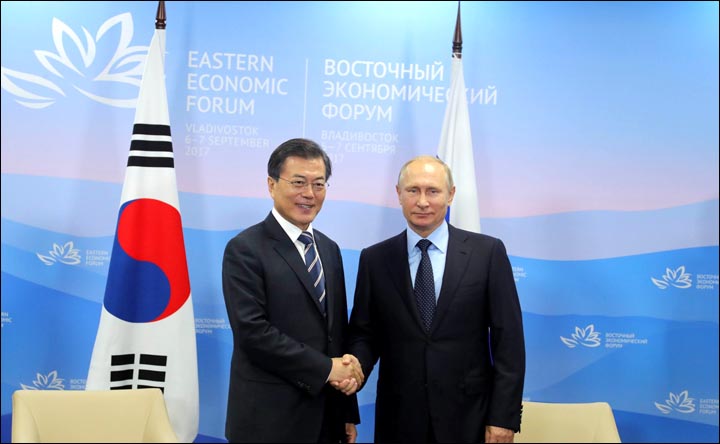
Vladimir Putin met South Korean President Moon Jae-in in Vladivostok and called for talks not more sanctions. Picture: Kremlin.ru
'We should not give in to emotions and push Pyongyang into a corner,' he warned. 'As never before everyone should show restraint and refrain from steps leading to escalation and tensions.'
Moon said: 'Myself and President Putin share a view that North Korea has gone the wrong way with its nuclear and missile programme and that easing tension on the Korean Peninsula is an urgent issue.'
On Thursday, Putin said 'common sense' could ease tensions over North Korea. He told the EEF: 'I am sure that things will not go as far as a large-scale conflict, especially with the use of weapons of mass destruction.'
He believed the Trump administration was 'willing to resolve' the situation.
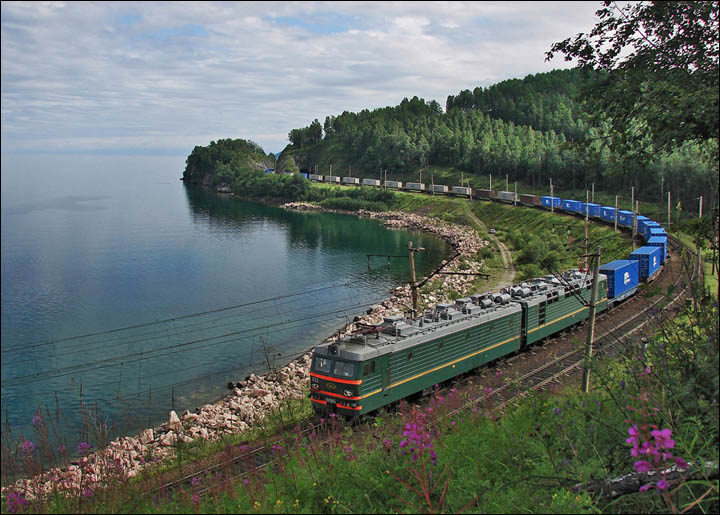
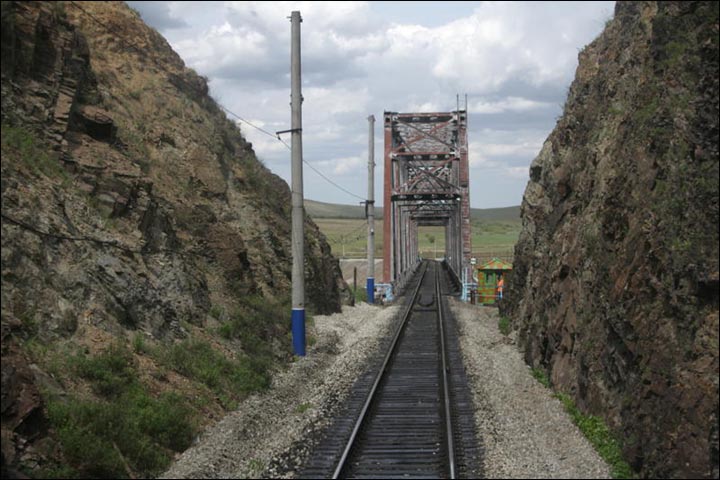
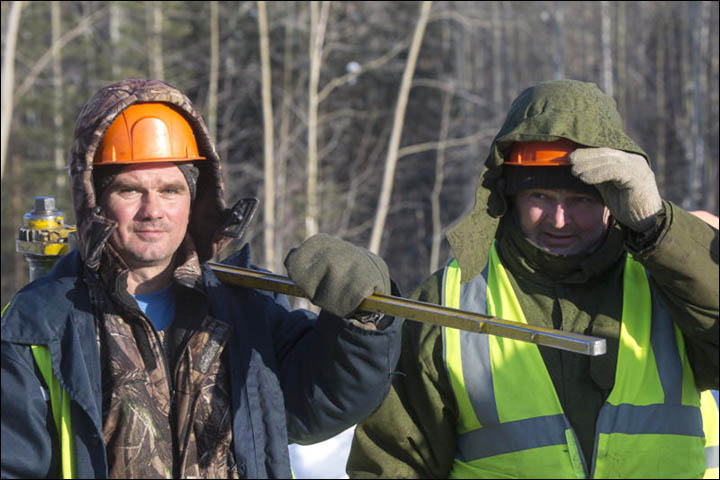
Trans-Siberian Railway. Pictures: Russian Railways
'All the competing sides have enough common sense and understanding of their responsibility. We can solve this problem through diplomatic means,' he said.
Participants of the EEF were told of Russia's priority aim to boost the economy of regions close to its Pacific coastline.
Some 837 investment projects have been established in the Russian Far East, which boasts rich natural resources, including oil, gas, portable water, diamond and forest reserves as well as unique logistic conditions, said Yury Trutnev, another deputy premier.
In an upbeat message, Putin said Thursday: 'The Far East offers a unique combination of opportunities and competitive advantages for the implementation of ambitious projects, including preferential tax treatment and streamlined administrative procedures, which are comparable to or even more comfortable than in the best development areas in Asia Pacific and the world.
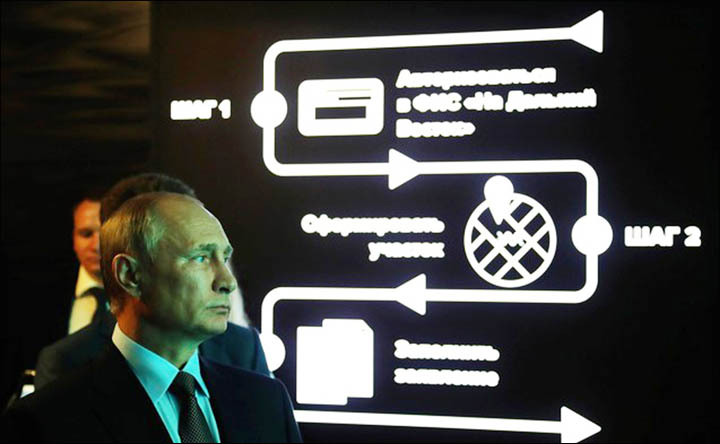
Vladimir Putin at Eastern Economic Forum 2017. Picture: Vostokforum
'These advantages also include rich natural resources - coal, oil, gas and metals, as well as low energy prices, which are lower in Blagoveshchensk, Vladivostok and Khabarovsk than in Busan, Seoul, Osaka, Tokyo or Beijing.
New transportation corridors are being built and ports capacities are being increased to give companies an opportunity to deliver their goods from Asia Pacific to Europe and back, as well as to other regions, as quickly and as cheaply as possible. We are scrutinising the opportunity of building a railway bridge to Sakhalin.
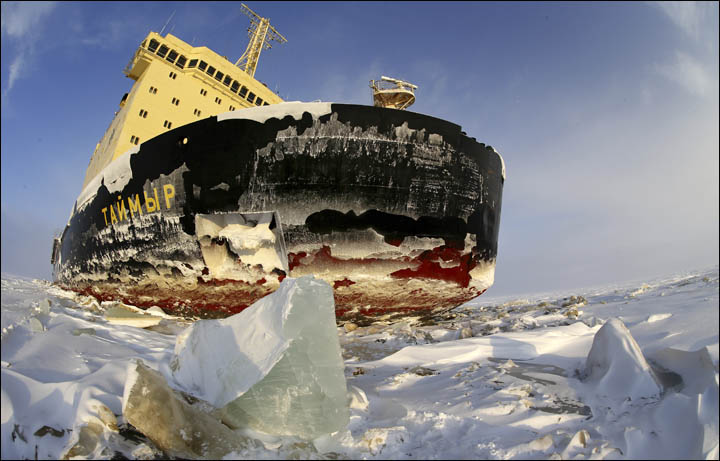
Winter oil shipping via Northern Sea Route. Picture: Gazprom
'Taken together with the development of the Northern Sea Route, modernisation of BAM and Trans-Siberian Railway and implementation of other projects, this will help us make the Russian Far East a major global logistics hub.'
The president said Russia was ready to work with partners from east and west.
'We are open for deeper investment, trade and financial ties with all partners, both from the eastern and western coast of the Pacific Ocean, especially considering that investment opportunities in Russia's Far East are truly immense,' he said at the EEF plenary session.
President Putin on Wedensday launched a series of new initiatives in the Far East.
This included the PJSC 'Vysochaishy' gold mining and processing enterprise in Yakutia. Deposits amount to 225 tons of gold.
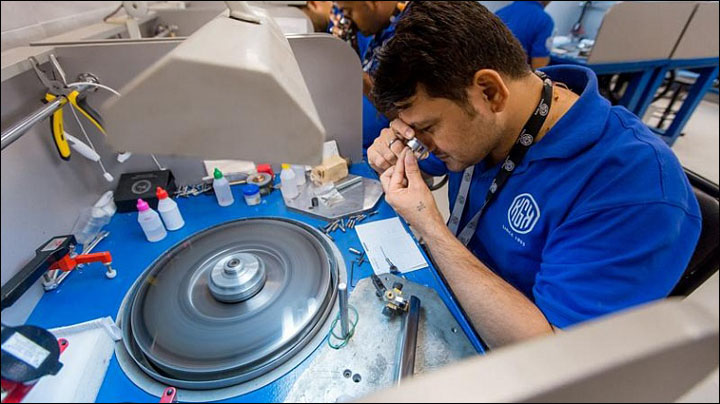
KGK diamond cutting plant launched in Primorsky Krai. Picture: ERDC
Polyus started the commissioning of its Natalka gold mining operation in Magadan, with a capacity to process 10 million tonnes of ore a year and some 2,000 new jobs.
The head of state launched a diamond cutting plant in Primorsky Krai.
And he gave a command to build factories for deep processing of soybeans in Amur Region and the production of sawdust in Khabarovsk region.
The Russian Direct Investment Fund (RDIF) and Alrosa gem giant are discussing joint investments on selling diamonds on the Asian markets, said RDIF's general director Kirill Dmitriev said in an interview with TASS.
'We are discussing various projects with Alrosa, including those related to distribution on the Asian markets, and we see opportunities for investments in projects for the distribution of diamonds.'
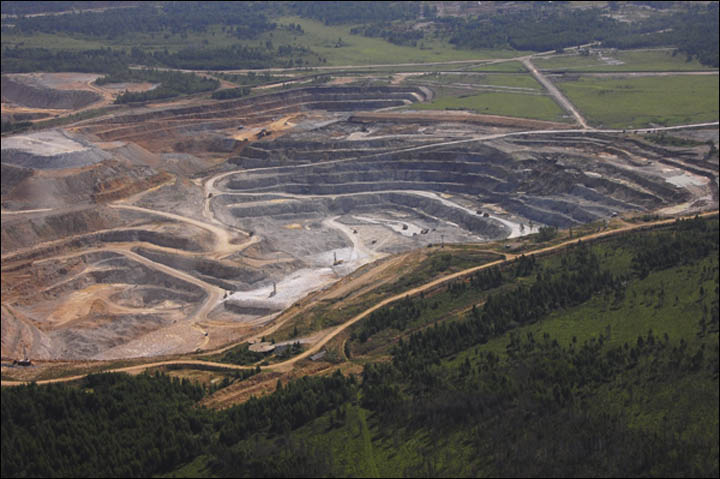
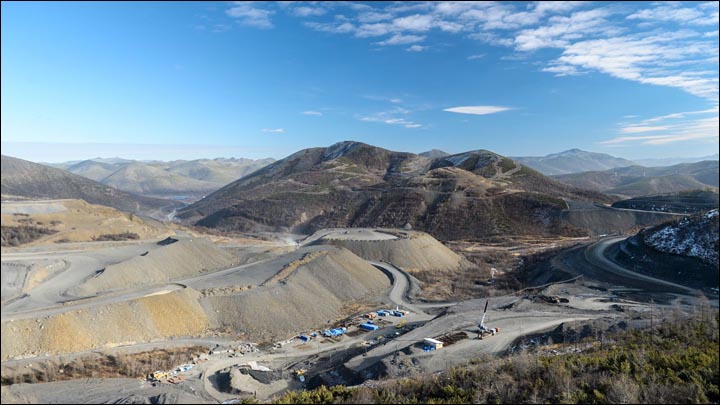
PJSC 'Vysochaishy' gold mining and processing enterprise in Yakutia. Polyus started the commissioning of its Natalka gold mining operation in Magadan. Pictures: The Siberian Times
Alrosa is unlikely to start new operations at its flooded Mir mine for more than two years, said the Yegor Borisov, head of the republic of Yakutia (also known as Sakha).
Eight men were lost after a rescue operation saved the lives of 143.
The suspension of the mine will not hurt sales of ALROSA, he said.
'We will have a reduction of production, but it will not affect sales of diamonds.'

What better way to fill Tokyo up with illegals.
The Japanese won’t go for any “land bridge”.
A better route might be through Vladivostok, down to South Korea and across the Korea Straight. Two shorter bridges in shallow water, anchored in the middle on Tsushima Island.
They’re proposing this in order to validate their theft of the Kuril islands and Sakhalin. The invasion that took these places occurred AFTER VE day. Stalin had stayed out of the Pacific war until he saw an opportunity to grab part of Japan.
No problem. Eliminate North Korea.
Unlike Hitler, Stalin did not want to fight a two front war...
I would worry about earthquakes in that region. And I wouldn’t want to be on a bridge that long when one struck.
Well, the USSR did fight the Japanese for a week, so they’re entitled to Japanese territory!
And then there’s the headache of Russia’s rail gauge. While it does discourage invasions via rail, you either have to change trains when entering or leaving the country, or the cars have to have their trucks exchanged like when the Trans Siberian enters/leaves China.
wrong - the facts are:,
the Red Army liberation of Manchuria was one of the largest battles in WW2 and involved ginormous Armies. Stalin fulfilled his obligations to a ‘tee’
I have ridden on a Russian passenger train, back in the 90s. They were old school, nice, with Pullman cars and tea service in your compartment.
I would love a Japan to Russia train trip.
Location Manchuria/Manchukuo, Inner Mongolia/Mengjiang, and north of Korea
Result
Decisive Allied victory Contribution to Japanese surrender Liberation of Manchuria, Inner Mongolia and northern Korea, and collapse of Japanese puppet states there Partition of the Korean Penninsula
Territorial changes Manchuria and Inner Mongolia are returned to China.
Belligerents
Allies: Soviet Union Mongolian People's Republic (Outer Mongolia) Axis:
Japan Manchukuo Mengjiang (Inner Mongolia)
Commanders and leaders
Soviet Union Aleksandr Vasilevsky [1][2] Empire of Japan Otozō Yamada (POW) Manchukuo Zhang Jinghui (POW)
Units involved
Soviet Union
Empire of Japan
Strength
Soviet Union: 1,577,725 troops[3] 27,086 artillery pieces 1,152 rocket launchers 5,556 tanks and self-propelled guns 3,721 aircraft
Mongolia: 16,000 troops Japan: 713,729 troops[1][3][4] 5,360 artillery 1,155 tanks 1,800 aircraft 1,215 armored vehicles
Manchukuo: 170,000 troops
Mengjiang: 44,000 troops
Casualties and losses
Soviet Union: 11,033 killed 24,125 wounded[5][6] 300+ tanks destroyed[7]
Mongolia: 72 killed 125 wounded[8]
Japan: 21,389 killed 20,000 wounded[9][a] unknown troops captured Much equipment captured[b]
Manchukuo: Most troops deserted beforehand[1]
Mengjiang: Most troops deserted beforehand[1]
Soviet claim: 83,737 killed
I dunno, eleven days and 1.5 million versus (including all the support regiments) fewer than 800K.
Yup, biggest battle ever. NOT
10 times the forces versus D-Day
FYI - never said it was THE biggest, just ONE of the biggest.
To put in context - at peak the entire Westen Front ( Norway to Italy ) had 6,500,000 military.
The battle to liberate Manchuria had 2,400,000 military.
my point is that we shouldn’t ever downplay the Russian Military - like the old saw ‘drunk they beat Napoleon, drunk they beat Victoria, and drunk they beat Hitler’
Totally ridiculous:
the Battle of Stalingrad lasted almost 6 months.
It might have involved a lot of human capital, which is true of everything the Soviets did at the time, but Stalin fought the Japanese for a little more than 10 days and was mostly contractual and deeply opportunistic.
I went from London to Hong Kong by train (also 1990)-— with the best part being on the Trans-Siberian railway. Such interesting vistas thru woods and small towns —AWA the big cities. Something I will never forget. A big coffee urn on each car was nice. The food? Sliced tomatoes and mystery meat stands out! LOL!
“...The operation was carried out as a classic double pincer movement over an area the size of the entire Western European theatre of World War II. In the western pincer, the Soviet Army advanced over the deserts and mountains from Mongolia, far from their resupply railways. This confounded the Japanese military analysis of Soviet logistics, and the defenders were caught by surprise in unfortified positions. The Kwantung Army commanders were engaged in a planning exercise at the time of the invasion, and were away from their forces for the first eighteen hours of conflict....”
as if Patton went from St. Lo to Berlin in 10 days.
Disclaimer: Opinions posted on Free Republic are those of the individual posters and do not necessarily represent the opinion of Free Republic or its management. All materials posted herein are protected by copyright law and the exemption for fair use of copyrighted works.